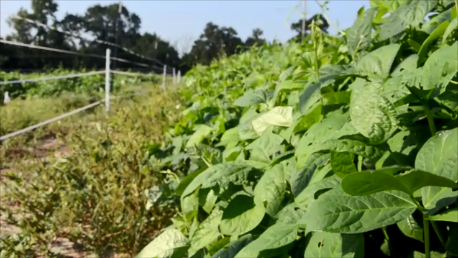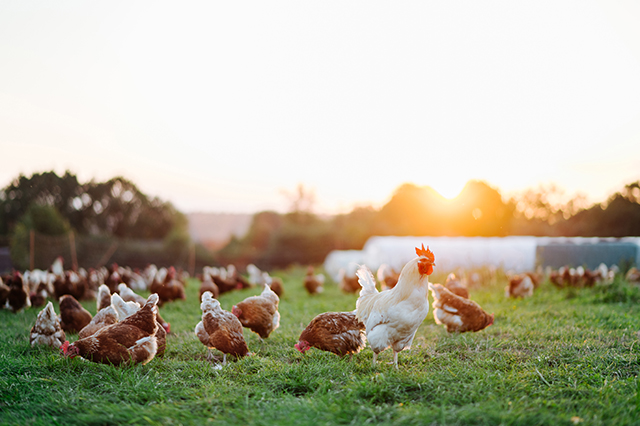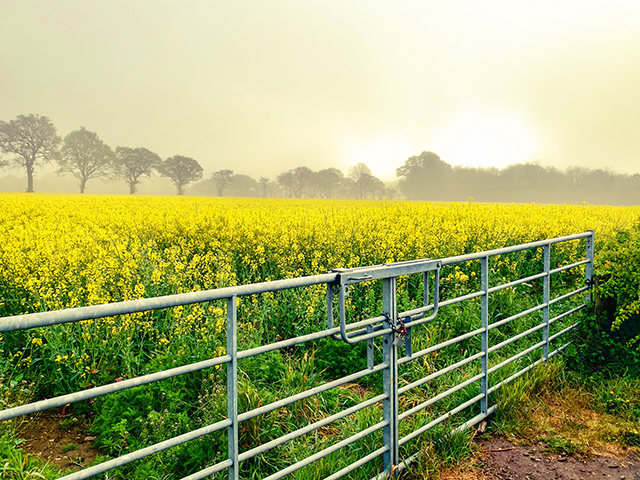Farm & Ranch
[AgriLife Today] Combination food plots can attract deer year-round

By: Adam Russell
Writer: Adam Russell, 903-834-6191, [email protected]
Contact: Dr. Billy Higginbotham, 903-834-6191, [email protected]
OVERTON – It’s time to plant food plots for white-tailed deer as hunting season approaches said a Texas A&M AgriLife Extension Service expert.
Dr. Billy Higginbotham, AgriLife Extension wildlife specialist, Overton, has a food plot combination proven to attract whitetails and keep them hooked through the hunting season and beyond.
The combination of winter-hardy oats, iron and clay cowpeas and arrowleaf clover works well in any area that receives 35 inches or more of rainfall each year, specifically in East Texas, Higginbotham said. Cowpeas grow quickly when planted in September when moisture is available. Sprouts are an immediate attractor for deer.
Higginbotham’s strategy is to establish numerous small plots edged by cover so deer will use them during legal hunting hours.
A great way to enhance plots is to provide a transition zone between the edge of the woods and the open food plots so deer feel comfortable moving through screening cover from the woods to the feeding area, Higginbotham said. Allow one or two disc-widths of native vegetation to grow between the food plot and the hard cover to provide secondary cover.
Also consider setting aside at least 1 acre for every 100 acres of habitat in cool season food plots as “sanctuary plots” that are never hunted, Higginbotham said.
“It’s good to rotate food plots each hunting season but I also recommend having a few food plots where deer can feed and are never pressured,” he said.
The cowpeas will be grazed out and/or die back at the first frost, but by then the oats will be established.
“Of all the small grains, deer prefer oats when given a choice,” Higginbotham said. “Be sure to select winter hardy oat varieties to plant because they will provide the bulk of the forage available from first frost until spring green-up.”
The arrowleaf clover will emerge in the spring and last until early June, he said. By then, spring-planted warm-season food plots should be established and able to carry deer through the summer.
To establish plots, shred and disk the area to be planted, Higginbotham said. Consider applying glyophosate to kill vegetation a few weeks before plot preparation if there is heavy vegetation on the site.
The plot should be in a natural opening that will provide enough sunlight for the forages but small enough to provide deer the security of nearby cover, Higginbotham said.
In a clean disked seedbed, broadcast the oats and peas at a seeding rate of 40 pounds per acre each and cover to a depth of 1 inch, he said.
“It is very difficult to disk lightly enough without burying these seeds too deep—a cardinal sin,” he said. “Consider devising a drag out of cattle panels or old tires so the seed can be covered to the correct depth.”
Cowpeas should be inoculated prior to planting. Be sure to purchase the appropriate inoculant when buying seed. Inoculation results in nitrogen fixation by the plants and boosts production.
Arrowleaf clover seed would then be broadcast at 10 pounds per acre and lightly dragged in, Higginbotham said. Like the cowpeas, clover should be inoculated prior to broadcasting. There are pre-inoculated varieties of arrowleaf clover available.
Inoculants minimize nitrogen fertilizer needs at planting and again in late deer season. However, if the oat component of the combination shows signs of “yellowing” during late December or early January, top dress the plots with additional applications of nitrogen at 200 pounds per acre.
“The cowpea-oat-arrowleaf clover-combination has proved to provide early deer hunting opportunities for youth-only and archery seasons when established in early September,” Higginbotham said. “The combination then provides a constant supply of forage for deer into early summer.”
-30-
LikeTweet
Find more stories, photos, videos and audio at http://today.agrilife.org
Farm & Ranch
Mammals and Avian Influenza

By Barry Whitworth, DVM
At the writing of this article, High Path Avian Influenza (HPAI) H5N1 has been detected in more than 83 million domestic poultry in the United States. The outbreak includes commercial and backyard flocks.
Most people are aware that poultry may succumb to Avian Influenza but may not know that other animals can be infected with the virus. According to the U.S. Department of Agriculture, a variety of mammals have been infected with Avian Influenza H5N1 in the U.S.
The list of more than 200 mammals includes bears, foxes, skunks, coyotes, etc. Even marine animals such as dolphins and seals have been found with the virus. Current Avian Influenza H5N1 infections in poultry, mammals, and livestock in the U.S. can be found at the Detections of Highly Pathogenic Avian Influenza website at https://www.aphis.usda.gov/livestock-poultry-disease/avian/avian-influenza/hpai-detections.
Recently, ruminants have been diagnosed with Avian Influenza H5N1 in the U.S. The World Organization for Animal Health reported that neonatal goats displaying neurological clinical signs and death were positive for Avian Influenza.
To read more, pick up a copy of the May issue of NTFR magazine. To subscribe by mail, call 940-872-5922.
Farm & Ranch
Meanwhile, Back at the Ranch…

By Rayford Pullen | [email protected]
When May arrives, we start thinking about weed control. With two years of drought under our belts, grass grazed short and hay stocks depleted, what we do now will influence our forage conditions for the entire year. With 75 percent of our annual warm season forages made by July 15 in North Texas, we need to get the grass growing while the sun shines.
Speaking of the sun shining, the biggest deterrent to growing lots of grass is restricted sunlight, and the biggest sun blockers we have are weeds.
Have you noticed weeds are normally just slightly taller than your grass and are probably blocking 90 percent of the sunlight from reaching the grass itself? So obviously, we need to improve conditions, so sunlight reaches the plants we want to grow.
With grass extremely short, more sunlight is hitting the soil surface now, which in turn results in more weed seed germinating. With the moisture we have received, we expect an abundance of weeds this year.
To read more, pick up a copy of the May issue of NTFR magazine. To subscribe by mail, call 940-872-5922.
Farm & Ranch
Land Market Report: March Land Sales

By Jared Groce
Rural land sales are continuing on a steady pace for early spring, with prices holding very strong with the sell-to-list price ratios remaining very high, even on properties that have been on the market for a longer than usual time period. The total number of transactions are picking up once again as the spring selling season kicks off, and the average acreage continues to decrease.
Larger acreage properties seem to be in higher demand than smaller properties currently, with many buyers simply parking cash in real estate to hedge against inflation. Interest rates seem to have settled down and most experts agree that rates will be reduced by the fed this year. Some lenders have programs in place that allow the buyer to reduce their rates without having to go through a full refinance ordeal.
To read more, pick up a copy of the May issue of NTFR magazine. To subscribe by mail, call 940-872-5922.
-

 Country Lifestyles1 year ago
Country Lifestyles1 year agoScott & Stacey Schumacher: A Growth Mindset
-

 Equine8 months ago
Equine8 months agoThe Will to Win
-

 Country Lifestyles7 years ago
Country Lifestyles7 years agoStyle Your Profile – What your style cowboy hat says about you and new trends in 2017
-

 Country Lifestyles4 years ago
Country Lifestyles4 years agoAmber Crawford, Breakaway Roper
-

 HOME7 years ago
HOME7 years agoGrazing North Texas – Wilman Lovegrass
-

 Outdoor9 years ago
Outdoor9 years agoButtercup or Primrose?
-

 Country Lifestyles7 years ago
Country Lifestyles7 years agoDecember 2016 Profile, Rusty Riddle – The Riddle Way
-

 Country Lifestyles8 years ago
Country Lifestyles8 years agoJune 2016 Profile – The man behind the mic: Bob Tallman






